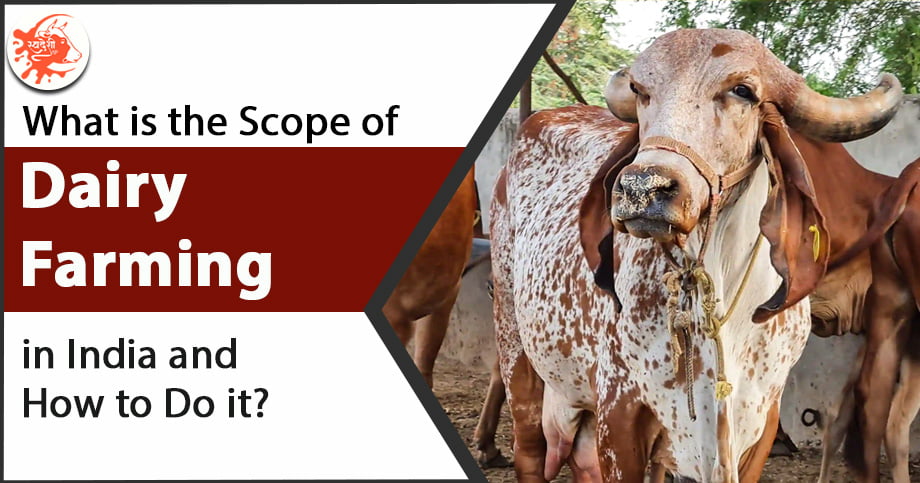
Dairy farming has served as an important aspect of nutrition for thousands of years. Today dairy cows are bred to give an abundance of milk. Cows can produce enough milk after having given birth, and cows ought to have one calf every year to keep producing milk or milk-derived products, just like humans. We advise you to look into the lucrative dairy farming industry if you find the aforementioned method intriguing and wish to adopt it as a business. Yes, it is highly appropriate to begin a career in this field. The Indian government and private banks also give the dairy industry a lot of financial support. Continue reading to discover more about the dimensions of dairy farming in India.
India is the world’s leading producer and consumer of milk. It calls for countless farms of various sizes. In India, dairy farming has a prolonged history and has been passed down through different generations. This custom started to fade in the latter part of the 20th century. However, significant progress has been made, thanks to developments in science and technology. The contribution Amul made in the shape of the “White Revolution” was crucial in elevating India’s dairy farming sector from a backwater to a global leader.
Dairy farming is the practice of keeping large herds of animals over extensive land. Ranchers who rear grazing animals such as dairy cows, cattle, and sheep are generally referred to as dairy farmers. Thus, compared to other agricultural sectors, the dairy and cattle industries are expanding more swiftly. The best industry for earnings and income potential is dairy farming. The dairy industry is built on farms with cows and buffalo. While Sahiwal, Rathi, Gir, and Red Sindhi are India’s top milk breeders, high-breeding buffalo breeds include Murrah, Mehsana, and Jaffarbadi.
One of the country’s major agri-businesses and also a leading contributor to the nation’s GDP is dairy farming in India. With a 4% economic share, it is the biggest agricultural commodity. With over 180 million MT output in 2020, India is the world’s leading milk producer. The growth of private dairy businesses, which now make up more than 60% of the nation’s dairy processing capacity, has been a significant contributing factor. Value-added products have driven market expansion in the Indian dairy farming industry, which has risen at a rate of 12% over the past five years. Around 70 million farmers are actively engaged in dairy farming, which contributes significantly to economic revenue.
As the world’s greatest population of livestock is found in India, it supports 14.7% of the world’s cattle population and around 57.3% of its buffalo population. According to estimates, the nation produced 84.6 million MT of milk altogether in 2001–2002. In contrast to the ICMR’s recommended minimum of 250 grammes per day, its per capita availability at this production was to be 226 grammes per day. Therefore, there is a great scope and possibility in dairy farming to increase milk production.
Below is a descriptive list of the top five methods for producing milk that is used by all dairy farms in India:
There are numerous benefits dairy farmers get by indulging in dairy farming. They can expand their business and get several opportunities in the dairy farming in India.

Rise in Demand: The last ten years have seen a sharp increase in market demand for organic milk, partly due to mounting evidence that it is more nutrient-dense and less harmful to the environment than milk produced in congested, toxic CAFOs[1].
Economic Benefit: Due to its higher nutritional content, organic milk is favoured by those who are health conscious, which increases levels of financial engagement. Customers might be charged a premium for organic milk because of its many health advantages. Consequently, a farmer can benefit more per animal.
Government Incentives: Major infrastructure investments in process, refrigeration, transport, cattle fodder, etc., are needed to support the economic growth of dairy farming industry. Furthermore, there are abundant unexplored prospects in sectors including exports, value-added dairy products, and organic/farm fresh milk. The federal and state governments have introduced several incentives to encourage investments in the industry. Infrastructure Development Fund for Animal Husbandry (AHIDF). One of the governments of India’s flagship programmes, the AHIDF, has a fund of INR 15,000 Crore set up to provide financial support for dairy farmers for the establishment of new units or the expansion of existing ones in the areas of dairy processing and linked value-added infrastructure and related value addition infrastructural facilities. The advantages are as follows:
Financial Assistance From Bank: For financial assistance, dairy farmers in dairy farming industry will be required to submit thorough project studies for dairy plans with significant outlays. Capital asset items like the buying of dairy cows, building sheds, purchasing equipment, etc., would be included in the list of financial items. The initial one- to two-month period’s feeding expenses are capitalised and provided as a term loan. You may be eligible for a loan to cover the costs of land development, fencing, well drilling, diesel engine/pump system commissioning, electrical connections, necessary servants’ quarters, godowns, transport vehicles, milk processing facilities, etc. Borrowers with high-value projects may use the expertise of NABARD Consultancy Services, which has extensive experience in the creation of Development Proposal Reports.
Since the 1970s, the livestock industry in India has increased its share of the country’s agricultural GDP. The value of all livestock output is dominated by the dairy industry, and milk production has been steadily increasing. The future of dairy farming seems promising. Through SwadeshiVIP, we are trying to contribute to the success of the dairy industry and encourage people to buy A2 milk and A2 milk-based dairy products.
Read our Article: Embrace Low Fat Dairy Products & Keep Diseases outside the Door
